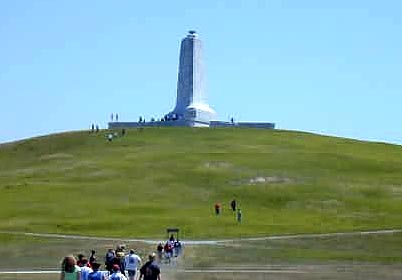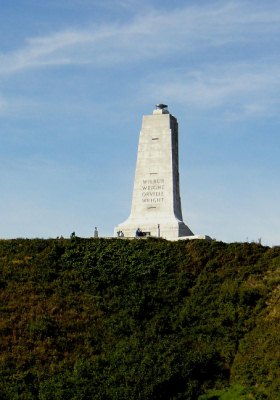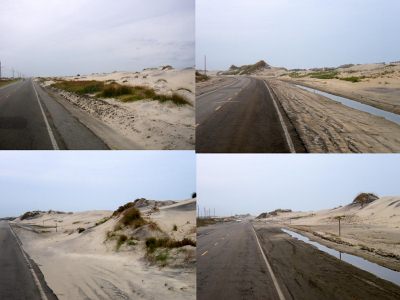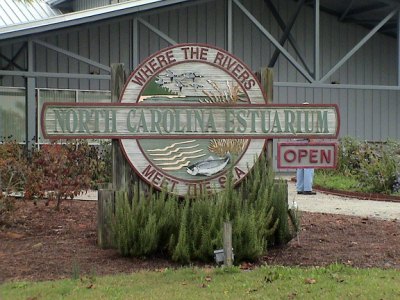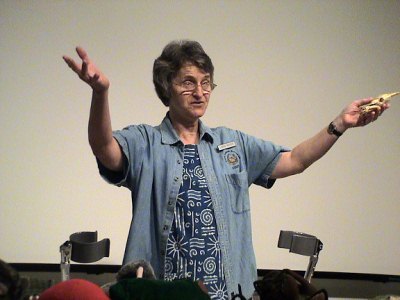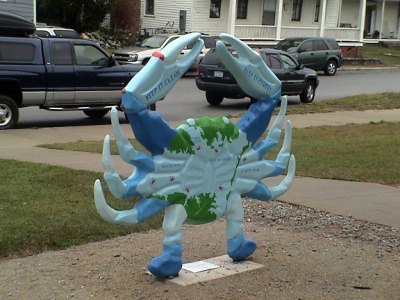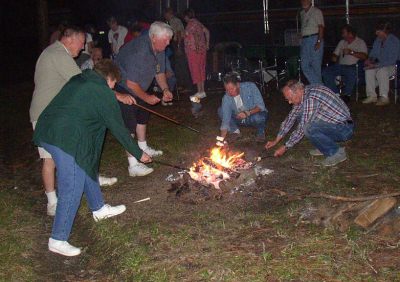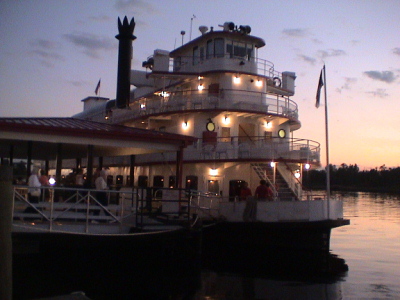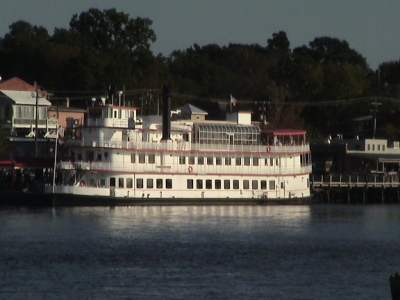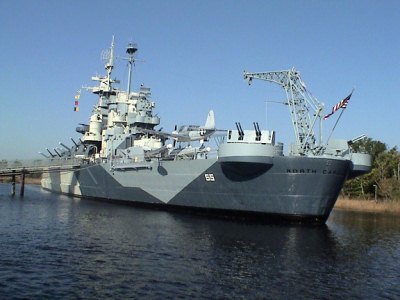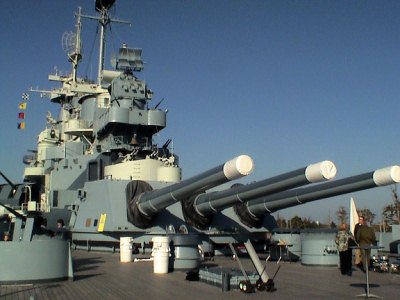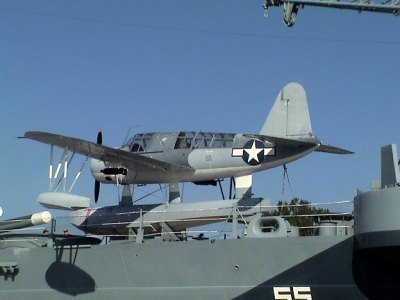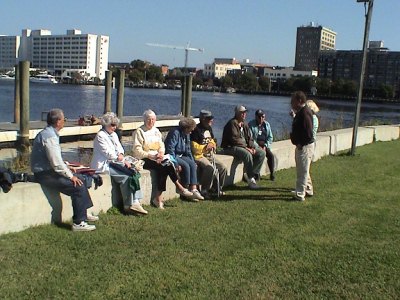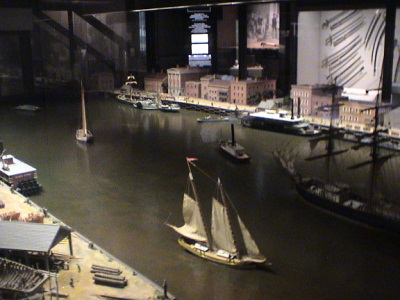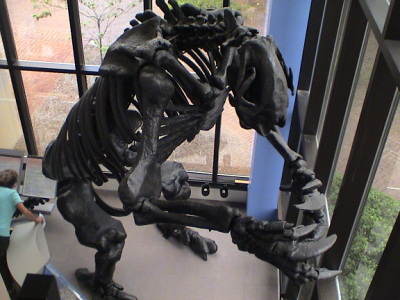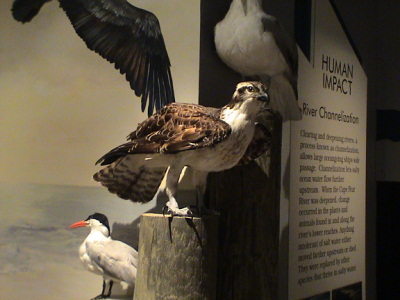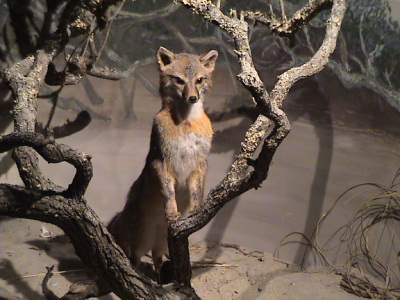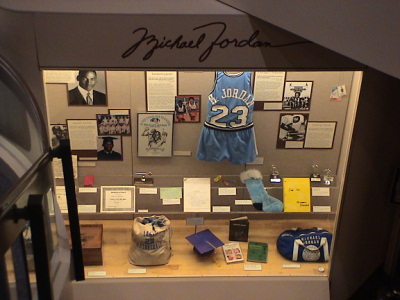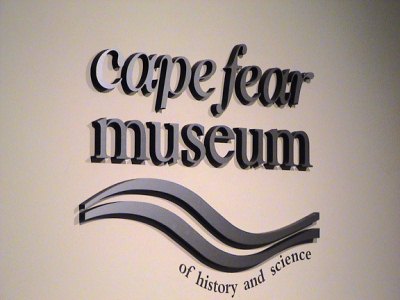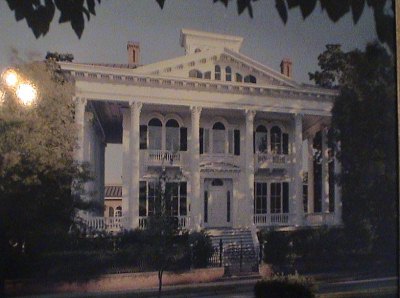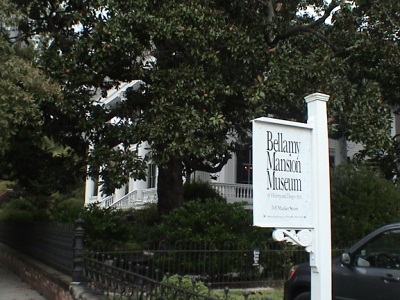October 14, 2006 - Wind on the Outer Banks is nothing unusual. This day was no different - bright sunshine, wind maybe 15 mph. Not quite as heavy a wind as on that day in 1903 when the Wright Brothers came to Kill Devil Hill to take advantage of the wind and wide open spaces here on the Outer Banks. It was December 17, 1903 - the day that changed the world forever - the day that Wilbur and Orville Wright proved that heavier-than-air flight was possible. Today we visited the Wright Brothers National Memorial atop that big sand dune called Kill Devil Hill. Actually, there were four Kill Devil Hills, this one being the biggest. They got their name from a barrel of "Kill Devil" rum that washed ashore in the late 1700s. The township called Kill Devil Hills (plural) came along later. When the Wright brothers were performing their magic, the community was called Kitty Hawk, and the area was all sand and sand dunes.
The brothers had come to Kitty Hawk several other times and had a base camp set up to live while they did their experiments. They flew that first plane four times that momentous day. The first flight lasted 12 seconds and covered 120 feet. The second flew 175 feet. The third 200 feet as they got the feel of it. Then they turned the plane loose to do all it could on the fourth flight, flying 852 feet for 59 seconds. The starting point, which was a single rail, is marked by a stone monument as are each of the touchdown points. They flew the plane one more time after all of that and crashed it for good, but they had proven that man could fly.
Before the monument could be built, the big dune had to be stabilized. Grass was planted by the CCC boys in 1930, and the whole area now is under a thick stand of grass - not the sand that was there during the flights. The huge granite monument on top of the 90 foot hill is an impressive sight. It's a pretty good hike to get up there.
We listened to a ranger tell the story, then walked through the exhibits and climbed the hill. It's all now part of the National Park Service. One remarkable part of the story - the Wrights and their helpers were all dressed in suits, ties, and hats during the flights.
On the way back to camp we stopped at the Bodie Island lighthouse. This light was authorized by Congress
in 1847, but construction was beset with problems. The first structure was built on a poor foundation and began to lean shortly after completion. Efforts to shore it up failed, and it had to be abandoned. A second lighthouse had further bad fortune. It was completed just as the Civil War broke out. Fearing that Union forces would use the structure Confederate troops blew it up in 1861. The third time was a charm. Though not on the exact spot as the first two, the present light has been working since 1872. The keeper's house was completed shortly after that. The lighthouse is 156 feet in height and has a first order Fresnel lens.
Back at camp it was our turn to help with serving the evening meal - pork barbecue with all the trimmings ordered in from one of the local BBQ places. For a change we had no seafood. The sun set over Pamlico Sound during the meal, and a pretty one it was - the first time in a long while that I'd seen the sun hit the horizon without a layer of haze to dim it. The cloud formations were gorgeous in the several minutes following.
October 16, 2006 - Today was a free day, but with all the significant attractions nearby already visited there wasn't much to do but clean up the coach, do laundry, and get ready for the next move. Five nights in one place is rather unusual for a caravan, but appealing nonetheless with more time to relax. It was a good stay on the Outer Banks, but time to leave.
October 17, 2006 - This was moving day - this time to Chocowinity, North Carolina. The wind had abated to an eerie dead calm. By the time we were ready to pull out, it started a drizzling rain that continued for the whole trip. Everyone made it okay - with a lunch stop and a stop at WalMart. Despite the rain we all enjoyed a catered fish and BBQ dinner in the evening. Think it was trout.
We spent five days on the Outer Banks of North Carolina. Now we're on the Inner Banks. Chocowinity is just a short distance across the Pamlico River from Washington, North Carolina, considered to be in the heart of the Inner Banks. As we were crossing the Pamlico River, we were crossing the probable path of Ann's ancestor - Jesse Lewis - who, we think, brought his family down the river from Pitt County in 1821, heading on down the coast to southern Georgia where he lived the rest of his life and raised his family.
October 18, 2006 - The Tar River becomes the Pamlico, then feeds the second largest estuarian system in the country - the largest being the Chesapeake Bay system. An estuary is a saltwater tidal basin into which a freshwater river flows. The water is therefore brackish - a mixture of fresh and salt. We visited the North Carolina Estuarium on this morning. With more than 200 exhibits, the center explores the life of this vast ecosystem. A vivacious lady presented a program which described the life and capture of the blue crab which is much a part of the local culture.
A campfire in the evening provided the fuel for roasting marshmallows and making smores. There was also some singing, poem reciting, and other fellowship.
October 19, 2006 - This was a free day from caravan activities. We took advantage of being within 20 miles of Greenville, North Carolina to visit the Eastern Carolina University (ECU) for some family research. Found the Revolutionary War record of one of Ann's ancestors who lived in Pitt County.
October 20, 2006 - This was moving day - to Wilmington, North Carolina. It was an easy 125 mile trip. The only slight difficulty was the crosswind which kept trying to shove us around. We were deparkers and thus left Chocowinity later than most units. We stopped in Jacksonville for lunch at a Golden Corral and there found our friends Sid and Sarah Watters. We drove with them the last 50 miles. We’re camped for the next four days in a KOA with all the amenities.
At 7:00pm we drove down Market street through the old historic part of Wilmington to the waterfront where we boarded the Henrietta III for a two and a half hour dinner cruise. The vessel had three entertainment decks. Our leaders had reserved the entire second deck for our party. The meal was good, but not spectacular - chicken, salmon, roast beef, plus veggies. Some folks took advantage of the dance floor. Outside, the weather was nice. As the vessel left the port, the sky was fading from a delightful sunset, but soon it became too dark to tell anything about where we were. We went upriver on the Cape Fear River for a ways, then turned and motored back downstream past the downtown area and out toward the ocean. At one point we watched a huge container ship being loaded - apparently bound for China. We returned to the dock about 10:00pm to find the waterfront hopping with the night crowd.
October 21, 2006 - Our first tour for the day was of the battleship USS North Carolina, permanently on display in Wilmington's harbor. The ship was physically impressive, but was even more so with realization of what it had accomplished in World War II. It was the first battleship to arrive in the Pacific theater after the Pearl Harbor debacle. It was actively engaged in every major battle during the war - 57 engagements. Torpedoed in 1942, it refused to sink and was right back into the action after repairs. In the six years it was commissioned, it was commanded by nine different Captains, all of whom became Admirals after leaving the North Carolina. It was the most decorated battleship in the war - claiming 24 Japanese planes downed, 9 islands bombarded, and 1 ship sunk. The North Carolina carried 2400 crewmen only ten of whom were killed in all that action.
The logistics of feeding the men, refueling, and maintaining the supply of ammunition is mind boggling. The design of such a complex ship before the days of computers is also mind boggling. One of the more interesting features of the ship was the way they handled the one airplane aboard. It was catapulted off the port side as the ship was put into a hard turn to starboard. The plane then had to come down in the water and taxi on its pontoons to the stern of the vessel where a crane lifted it back into position. Our tour was enhanced by the presence of one of the North Carolina's veteran crewmen. He was unique in relating his experiences.
We took a water taxi across the Cape Fear River to the Wilmington waterfront for lunch at the Elijah Restaurant. Then, after a trolley tour of the historic district of Wilmington we took the water taxi back to where we had parked near the battleship and drove back to camp.
The first major city in North Carolina, Wilmington was incorporated in 1739 and was a seaport settlement for several years before that. Lumber from the surrounding forest provided fuel for the economy before and after the American Revolution. It was the last Confederate port to fall during the Civil War. Several remnants of Civil War era vessels are still evident on the far side of the Cape Fear River across from Wilmington.
October 22, 2006 - It began as another bright and sunny day, but soon changed to drizzly rain. After church we drove out to Wrightsville Beach for a little sightseeing before visiting the Cape Fear Museum on Market Street with its 46,000 artifacts from around the area. This museum is one of the better ones around the country - lots of interesting exhibits that depict the history of Wilmington and the rest of the Cape Fear area. The exhibits ranged from prehistoric skeletons to historic models to wildlife to Michael Jordan, a native son.
From the museum we moved a couple of blocks over to the Bellamy Mansion. This antebellum mansion rivals the mansions around Natchez, Mississippi. We had a lively young lady for a tour guide. Dr. John Bellamy was a surgeon, but obtained his wealth by the forest products - pine tar and lumber - that he sold to the shipping industry.


